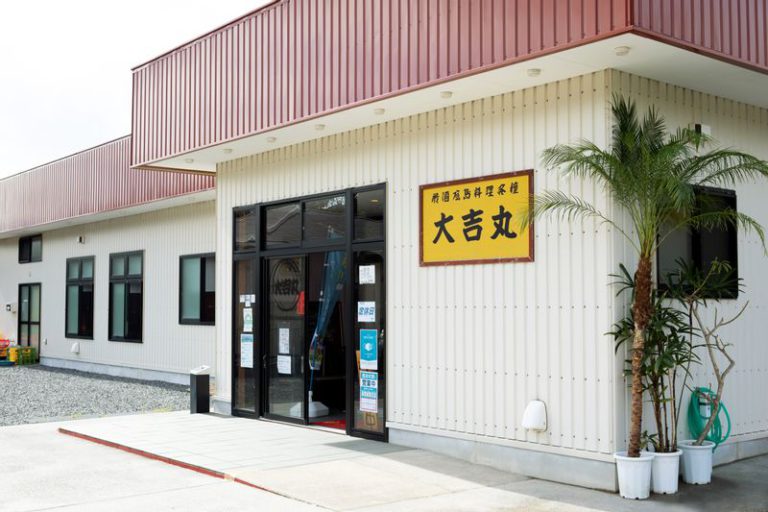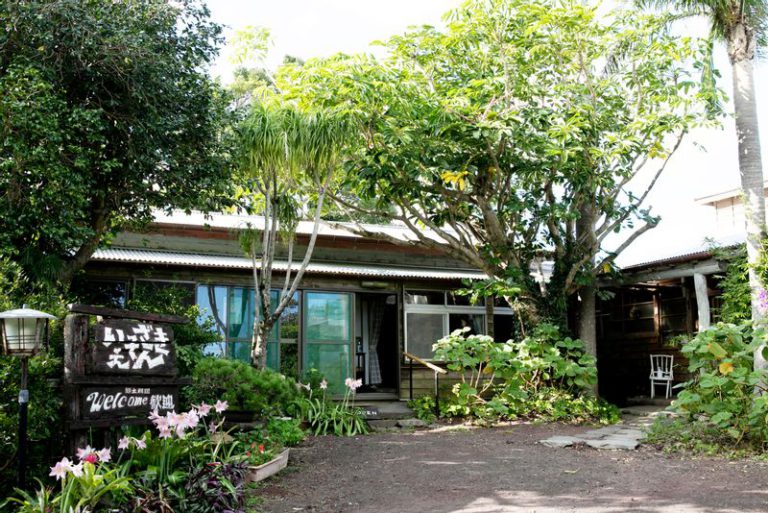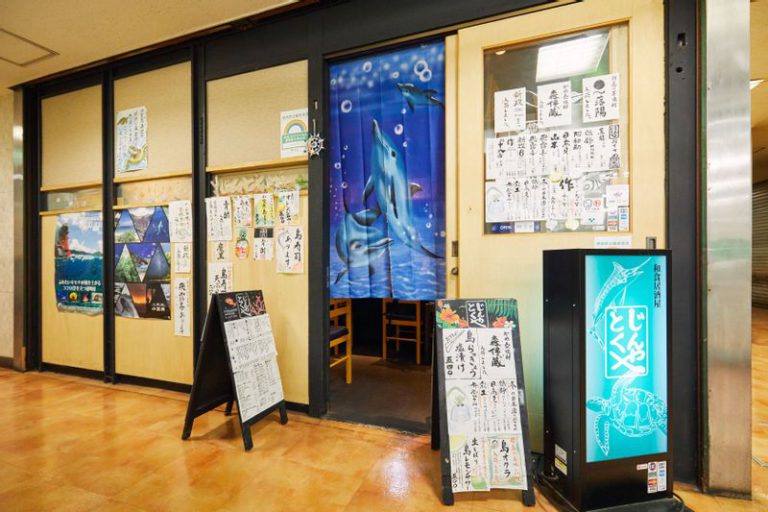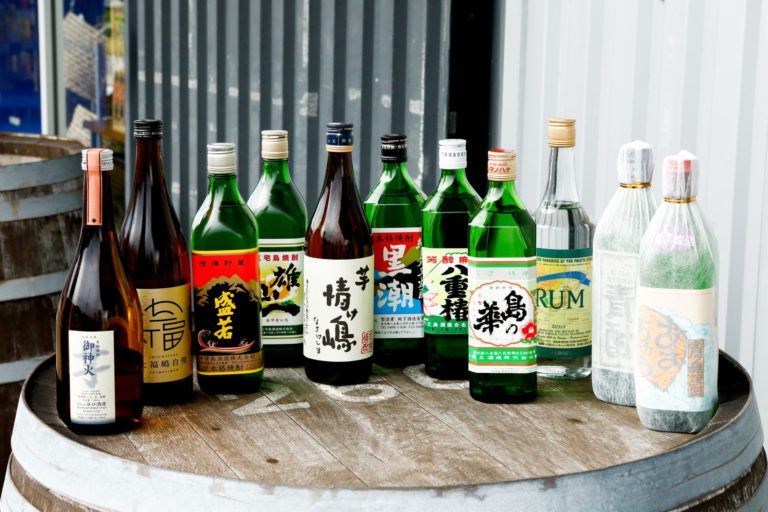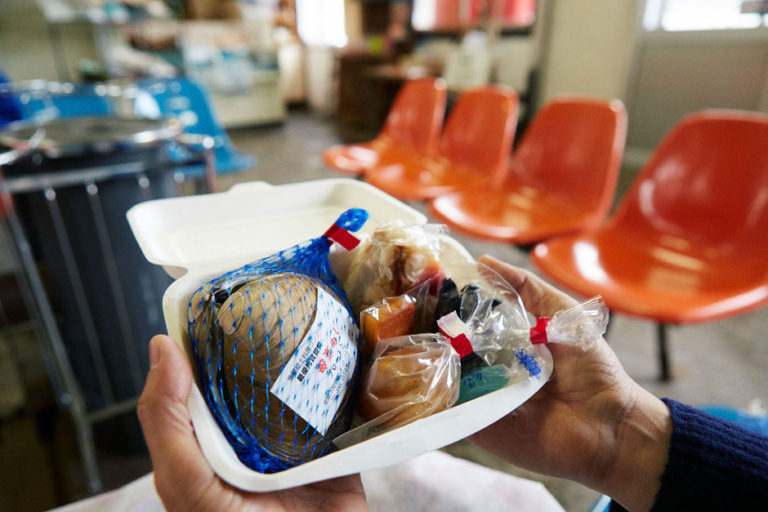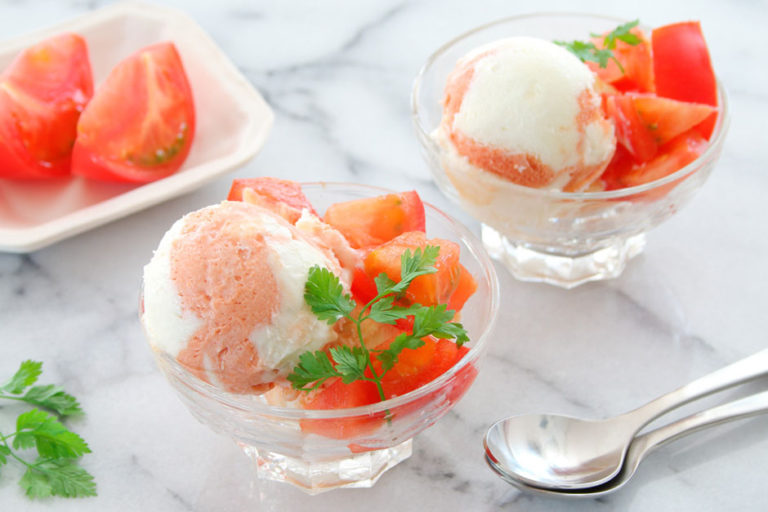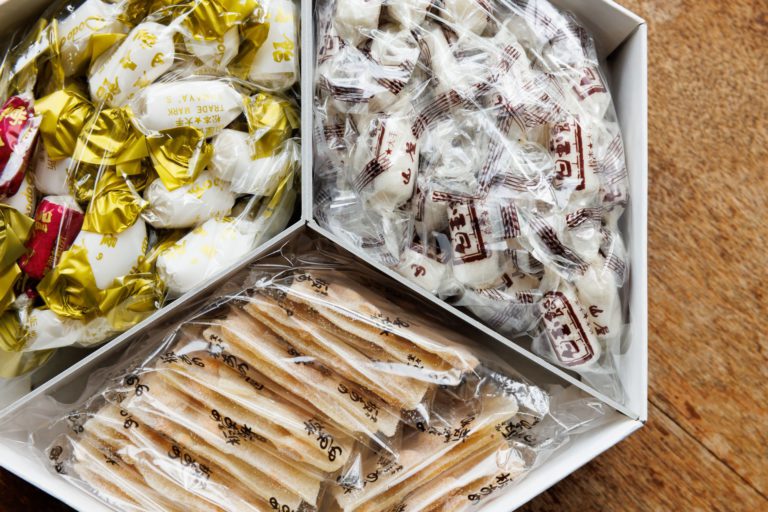Island Feasts that are Full of the Remote Islands’ Bounty and History
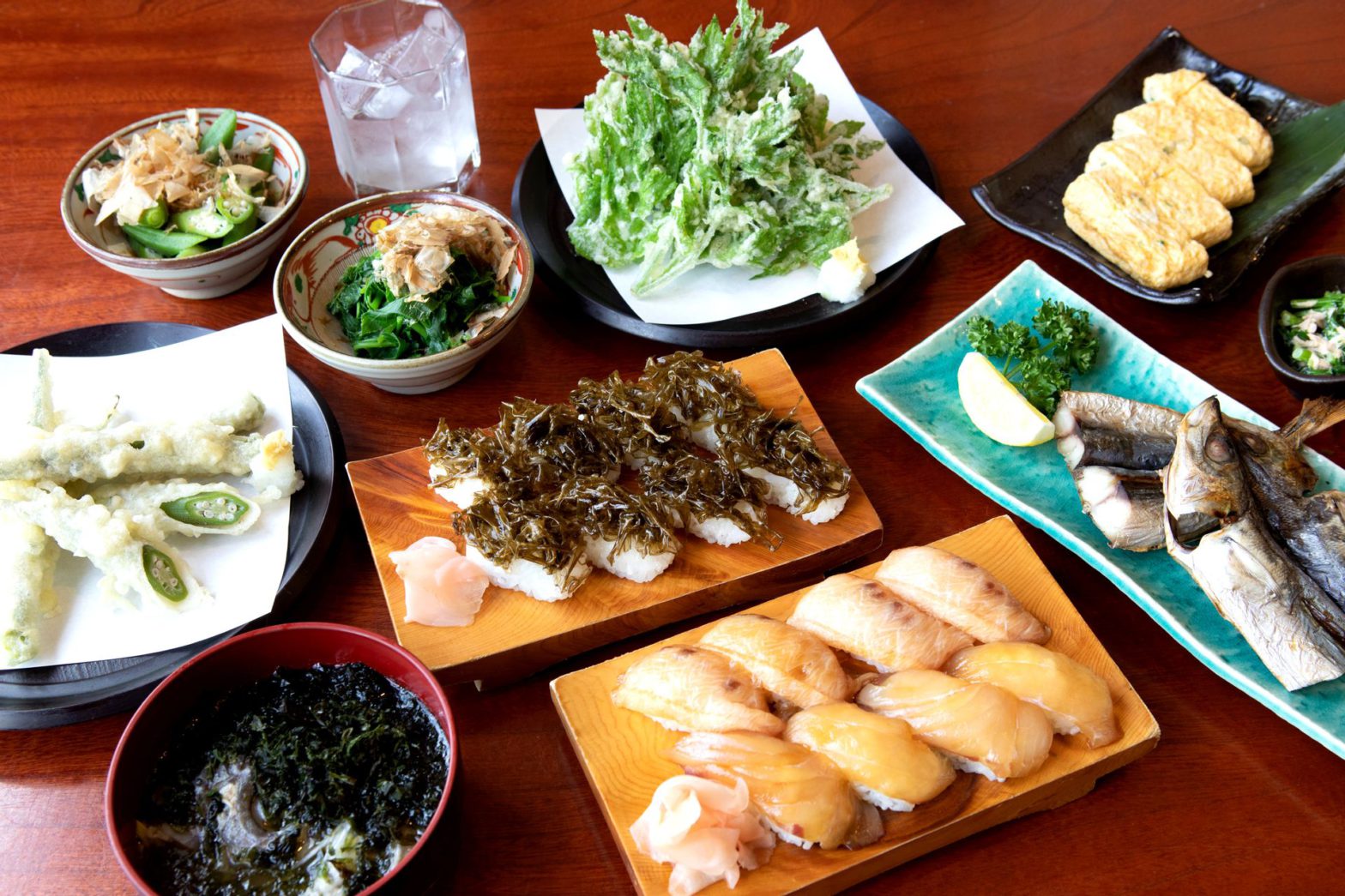
The Izu Islands dishes are made by utilizing the rich natural surroundings
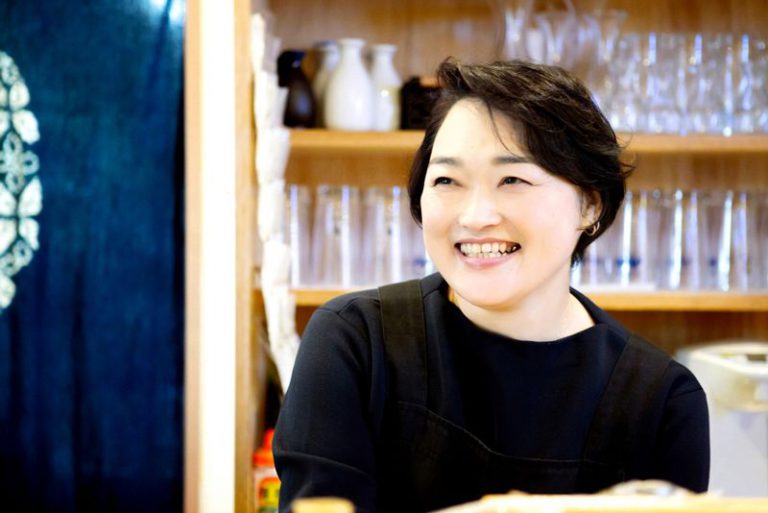
Let’s begin with the local specialties of the Izu Islands.
Daikichimaru, an izakaya (tavern) serving local dishes and shochu on Hachijojima, helped us with our research. Emi Tateishi, the owner and an island native, prepared some typical island dishes.
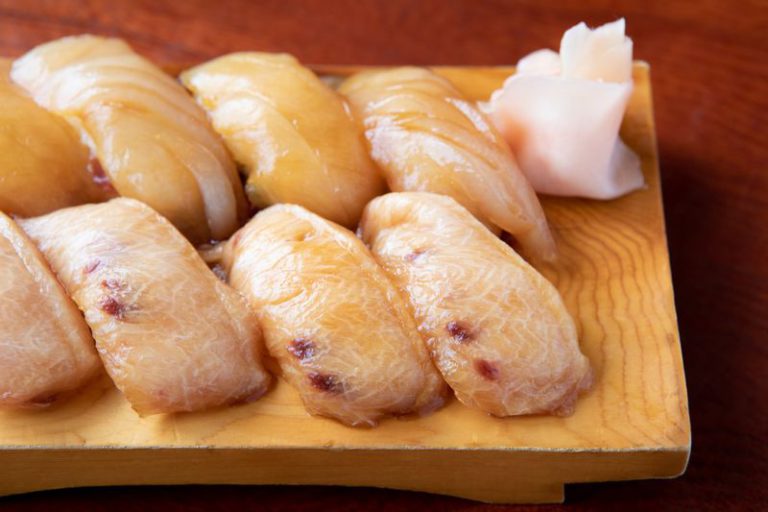
Shimazushi
Shimazushi is the Izu Islands’ classic regional dish. Seasonal fish, such as the Pacific barrelfish and swordfish caught in home waters, are marinated in a soy and mirin sauce and draped over pieces of hand-pressed rice mounds seasoned with sweetened vinegar. What makes shimazushi unique is that mustard is used in place of wasabi, as the latter is hard to come by on the islands. The practice of marinating fish to prolong its shelf life became established here due to the warm climate.
“I’ve been eating this at home since I was a child, and we always bring shimazushi whenever we have a memorial service or island event. The flavor of the sauce and the way of making shimazushi vary by home and by restaurant, but it is our soul food,” said Tateishi.
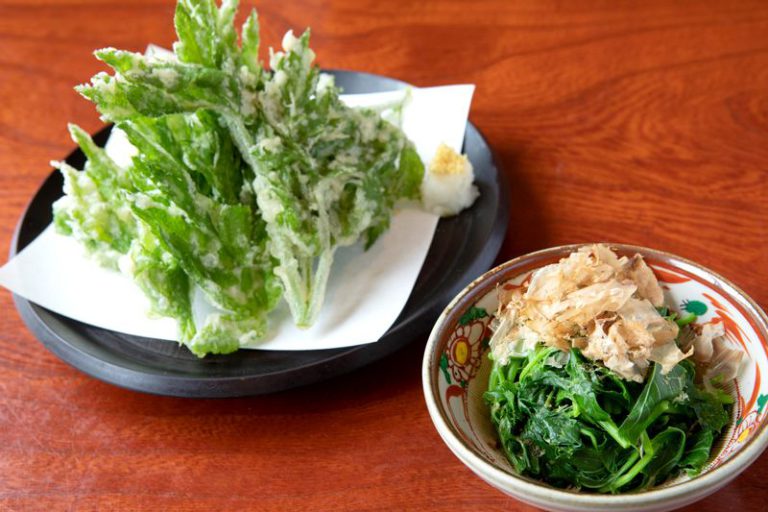
Ashitaba (angelica keiskei)
Ashitaba is a perennial plant in the Apiaceae family with a distinctive bitterness, and it is indigenous to the Izu Islands, including Hachijojima. It is a vigorous plant and was named ashitaba (literally meaning “tomorrow leaf” in Japanese) as it shows new growth just a day after being picked.
“It’s so familiar to us as a food ingredient as we find it in our gardens, and we use it in place of spinach on the island. I recommend tempura as it mellows its bitterness, and you can also enjoy the texture. I also use it in ohitashi (blanched vegetables in a dashi sauce) and tamagoyaki (Japanese-style omelet) in my restaurant.”
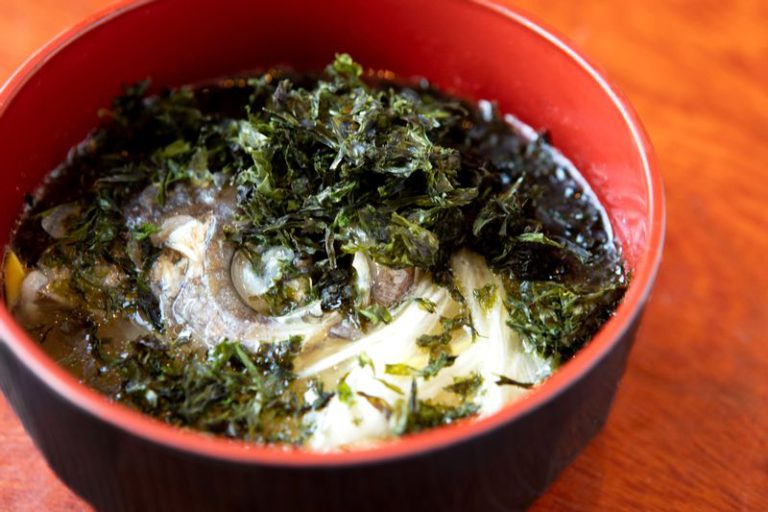
Shimanori (island seaweed)
Shimanori is one of the island’s unique food ingredients that can be enjoyed thanks to the harsh natural surroundings. The island is battered by westerly winds in the winter, meaning the sea is often rough, resulting in masses of seaweed that cling to the clusters of giant lava rocks along the coast. The islanders use a special tool to handpick the laver, and then rinse and sun-dry it to make shimanori.
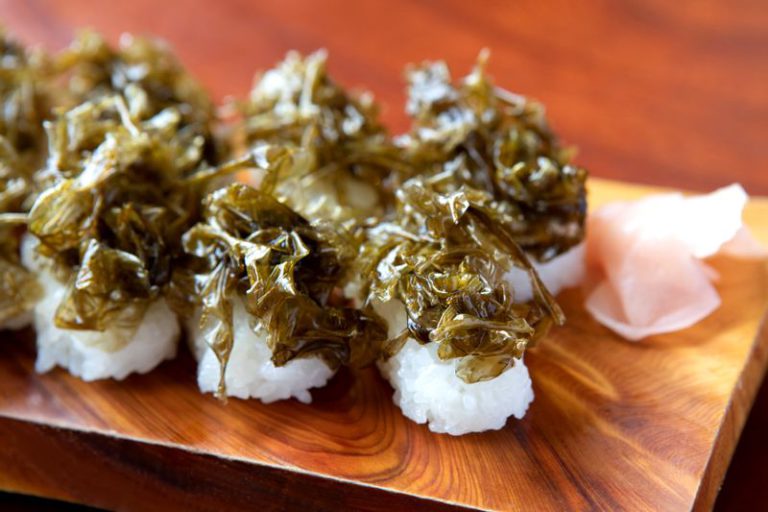
It can be enjoyed in various ways, including on its own and in soups. A nigiri made with shimanori stewed in soy sauce is served with shimazushi.
“Grilling it until crisp accentuates the smell of the ocean and umami. It makes a tasty snack, and it’s also delicious on rice.”
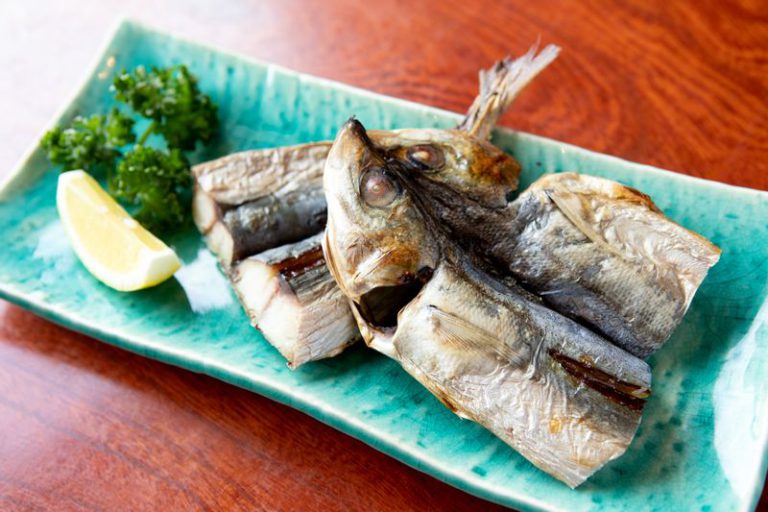
Kusaya (salted, dried, and fermented fish)
Kusaya is a fermented food product unique to the Izu Islands. It is a regional dish with a tradition that goes back over 300 years, starting in the Edo period (1603–1868). It refers to dried fish that are caught in home waters, such as amberstripe scad, which are then soaked in kusaya brine and dried.
Since salt was valuable on the islands in the olden days, the islanders reused saltwater when processing fish to preserve it. The microorganisms on the fish and umami components blend into the brine after soaking the fish several times, resulting in the kusaya brine, which is a fermentation liquor with a distinct flavor. Its uniquely pungent aroma is a perfect match with shochu, and the locals often eat kusaya as a complement to this island spirit.
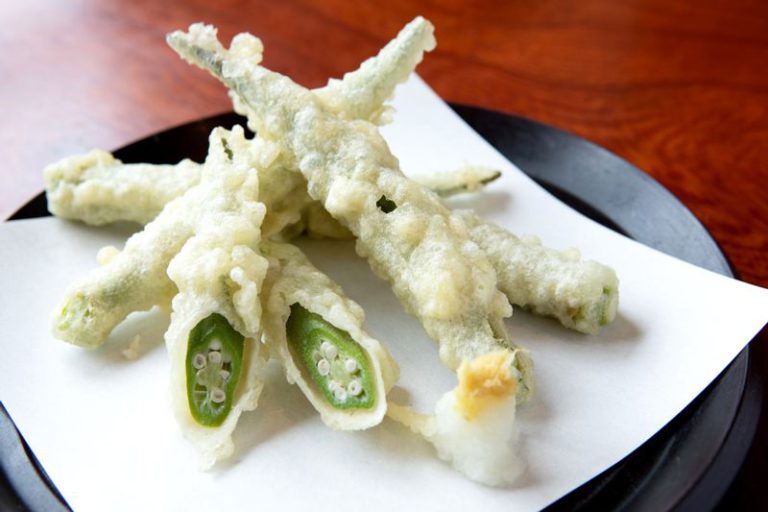
Neri (island okra)
Hachijojima’s warm climate is utilized for growing neri. Also known as island okra, it is often enjoyed in the summer when the harvest season reaches its peak. Longer and thinner than ordinary okra, it is markedly slimier and sweeter. Neri is commonly enjoyed as tempura and ohitashi (blanched and served in dashi sauce).
“When it’s in season, it tastes the best when blanched quickly and eaten semi-raw.”

Born and raised in Hachijojima, Tateishi worked on mainland Tokyo. After living on the mainland for 22 years, she returned to Hachijojima and took over the family restaurant. Today, her daughter Kotono helps her run the business.
Tateishi said that when she returned to the island, she came to realize the richness of the island’s food culture, which she had not even noticed before.
“Living on the mainland, I learned the lavishness of the island’s food culture. I took for granted that the fish is fresh, that the vegetables are seasonal and abundant, and that the seasoning is distinctive. I realized how unexpectedly rich our food culture is. I want people to try our island cuisine when they come here.”
We next visited Isozakien, another restaurant offering regional cuisine in the Kashitate district, Hachijojima, to serve us dishes unique to the island.
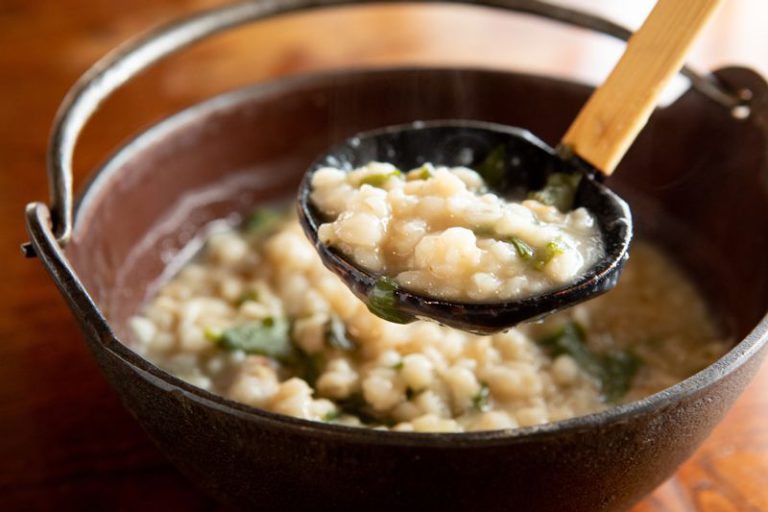
Mugizosui (barley porridge)
Since the olden days, there has been a custom of eating barley because rice was precious on the remote islands. The porridge that people on the islands eat is made of barley cooked in a miso-based soup with finely chopped taro and ashitaba. It is said that people used to regard it as food for those exiled to the islands, but it is still enjoyed today for its high nutritional value. There are many variations of it, including shellfish and nori.
Isozakien also provides customers with a taste of the island’s history through regional dishes, including those created after a feast served to exiles after they served their term and received a pardon.
Ogasawara Islands’ feast involves sea turtle dishes

The next regional cuisine be featured is that of the Ogasawara Islands.
Jintokuya, an izakaya serving Ogasawara cuisine in Shinanomachi, Shinjuku, Tokyo, helped us with our research. The owner, Koji Sasaki, from Hahajima on the Ogasawara Islands, introduced us to the islands’ unique dishes, which are also the restaurant’s signature fare.
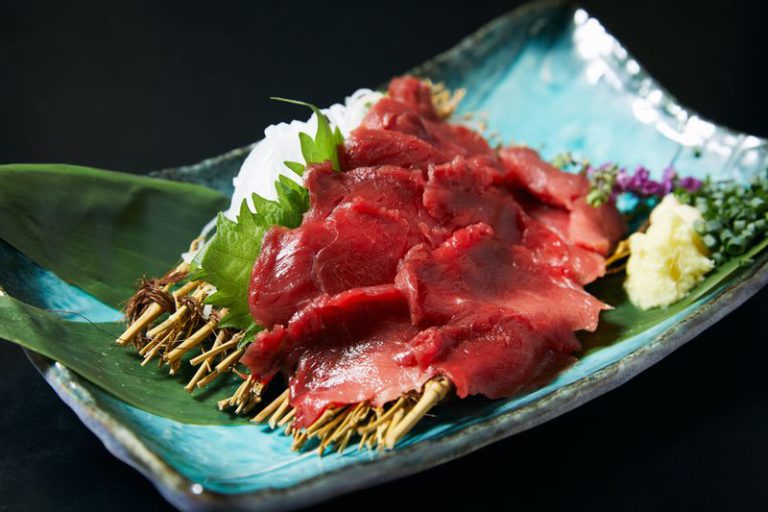
Turtle dishes
Above all, turtle dishes are the regional dishes that best represent the Ogasawara Islands. Sasaki, who is from Hahajima and whose father is a fisherman, has fresh sea turtles delivered to his restaurant in the winter.
Sashimi is the most popular way of eating a turtle. The breast meat, of which one turtle yields only a few kilograms, is enjoyed with garlic and ginger. It has a surprisingly mild taste and has characteristic umami and texture similar to horsemeat and tuna.
Kameni (stewed turtle) is a turtle dish enjoyed at home. The dish involves stewing the innards, fatty meat, and flippers. The seasoning varies between Chichijima and Hahajima. In Chichijima, it is traditionally light and salty, whereas in Hahajima, it is cooked in a sweet and savoury soy-sauce-based broth.
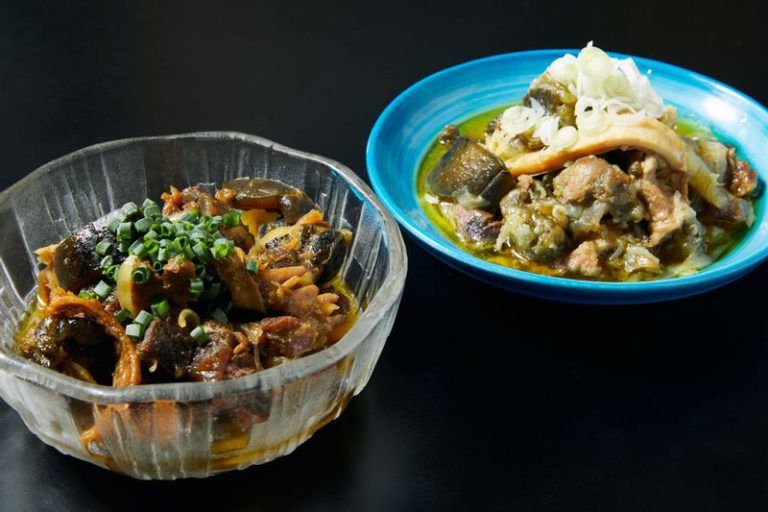
“The sea turtle is like Ogasawara’s symbol. The fishing season opens every year on January 1, and the islanders celebrate the day by eating kameni together. I think it’s a dish that is profoundly associated with Ogasawara’s way of life and culture.”
The green turtle is listed as endangered, but the Ogasawara Islands are permitted to catch up to 135 per year to protect the islands’ tradition and food culture. Although they catch green turtles, they are also working to protect the species. If fishermen catch a female green turtle with fertilized eggs, they will take the turtle to a marine center on one of the islands to artificially hatch the eggs.
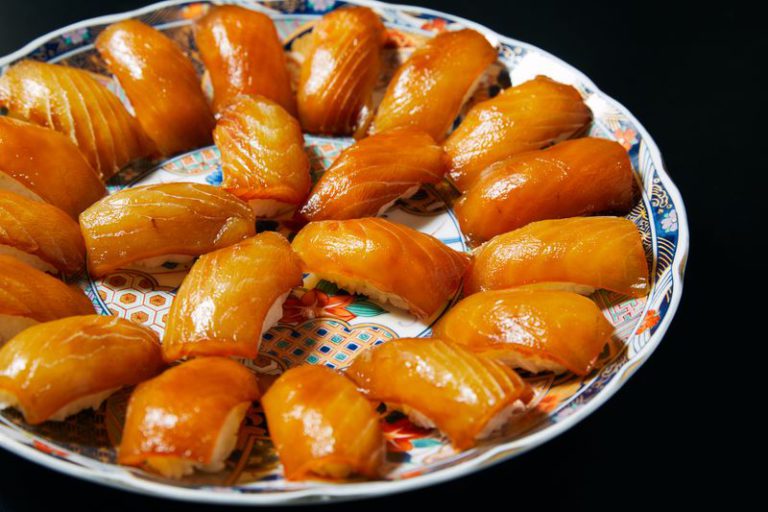
Shimazushi
The classic shimazushi enjoyed on the Izu Islands is also a regional dish regularly eaten on the Ogasawara Islands. Pacific barrelfish and swordfish are typical toppings on the Izu Islands, but Japanese Spanish mackerel is the primary ingredient in Ogasawara. The sushi rice is seasoned to be slightly sweeter, and since wasabi is unavailable, the islanders use mustard, just as they do on the Izu Islands.
“The locals make extra servings of shimazushi. The Ogasawara style is to serve it on a large platter. We refrigerate leftovers and eat them the next day. They become tastier as time passes. That’s why we often have shimazushi for dinner and breakfast the day after,” commented Sasaki.
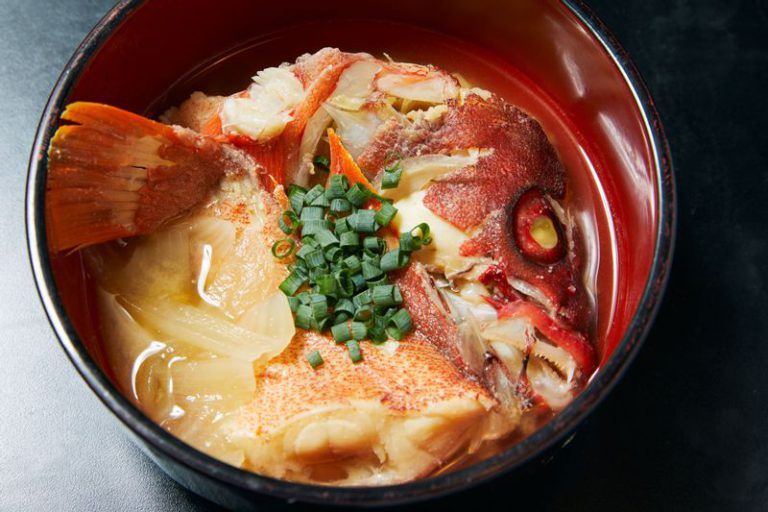
Akaba
The blacktip grouper caught in the Ogasawara Islands’ home waters and enjoyed by the locals is called akaba on the islands.
Since akaba produces rich dashi, the islanders generally enjoy it by cooking it with vegetables in a miso soup. The akabajiru is a regional dish enjoyed on a daily basis.
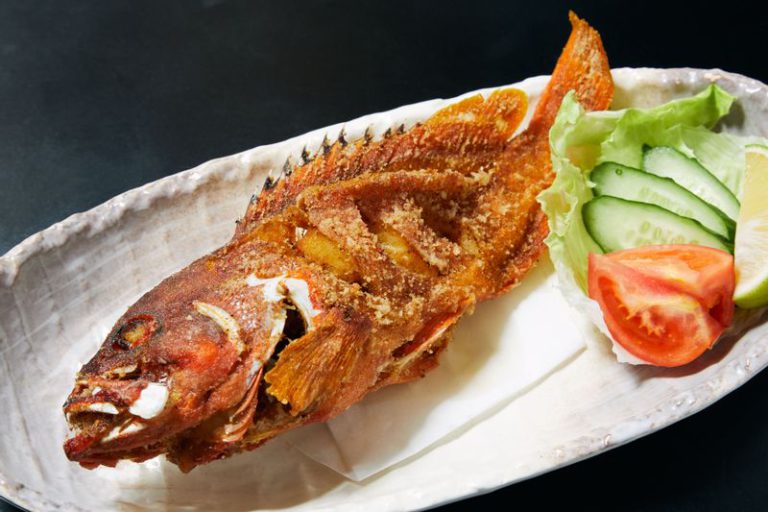
Deep-fried whole akaba is another classic dish. Deep-frying is the recommended way of enjoying the whole fish, including the skin.
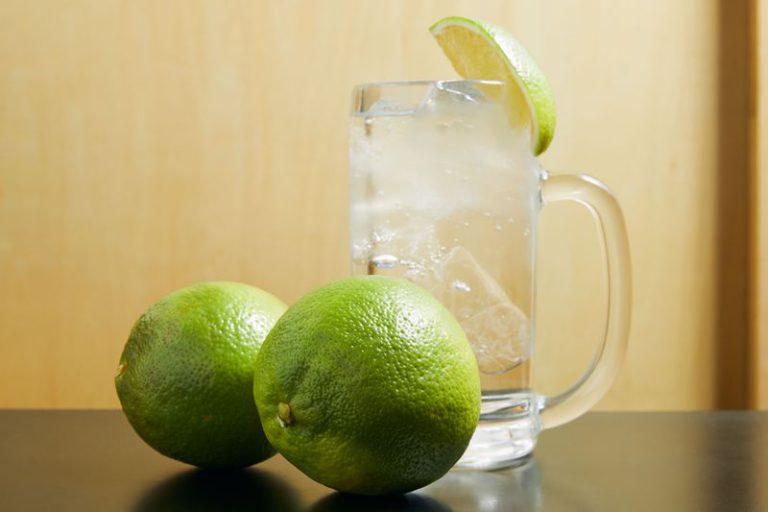
Shima lemon (island lemon)
Shima lemon is a fruit that represents Ogasawara. The lemon, which is reputed to have come from Hachijojima, is larger than regular lemons, markedly sweeter, and produces more juice. Ogasawara’s lemons are shipped while still green so that their fresh scent can be enjoyed.
Besides using the lemon in salads and deep-fried dishes, the locals add shima lemon to shochu mixed with water, which is called mizu lemon (lemon water).
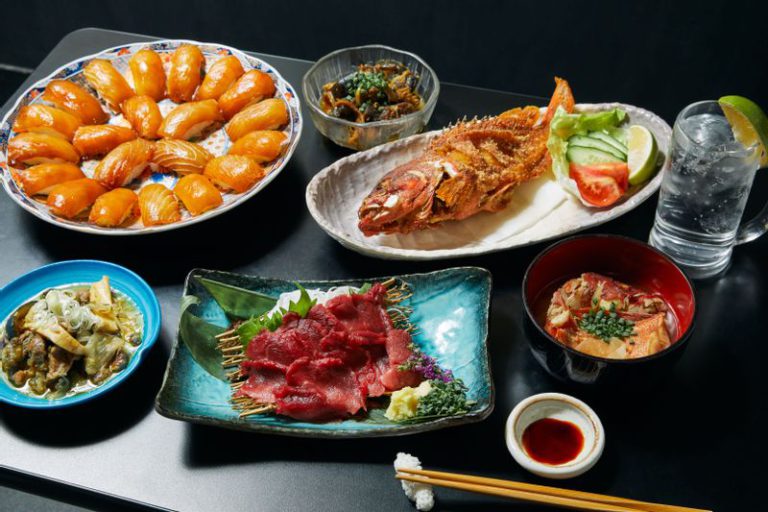
There are many other traditional regional dishes on each of the Tokyo Islands, in addition to those described in this article.
While the islanders were unable to obtain ingredients from outside of the islands, they were able to use their wits and ingenuity to maximize nature’s bounty to create delicious foods. They thus nurtured the islands’ food culture that is unlike that of anywhere else.
It is well worth visiting the islands to experience their unique food culture.

